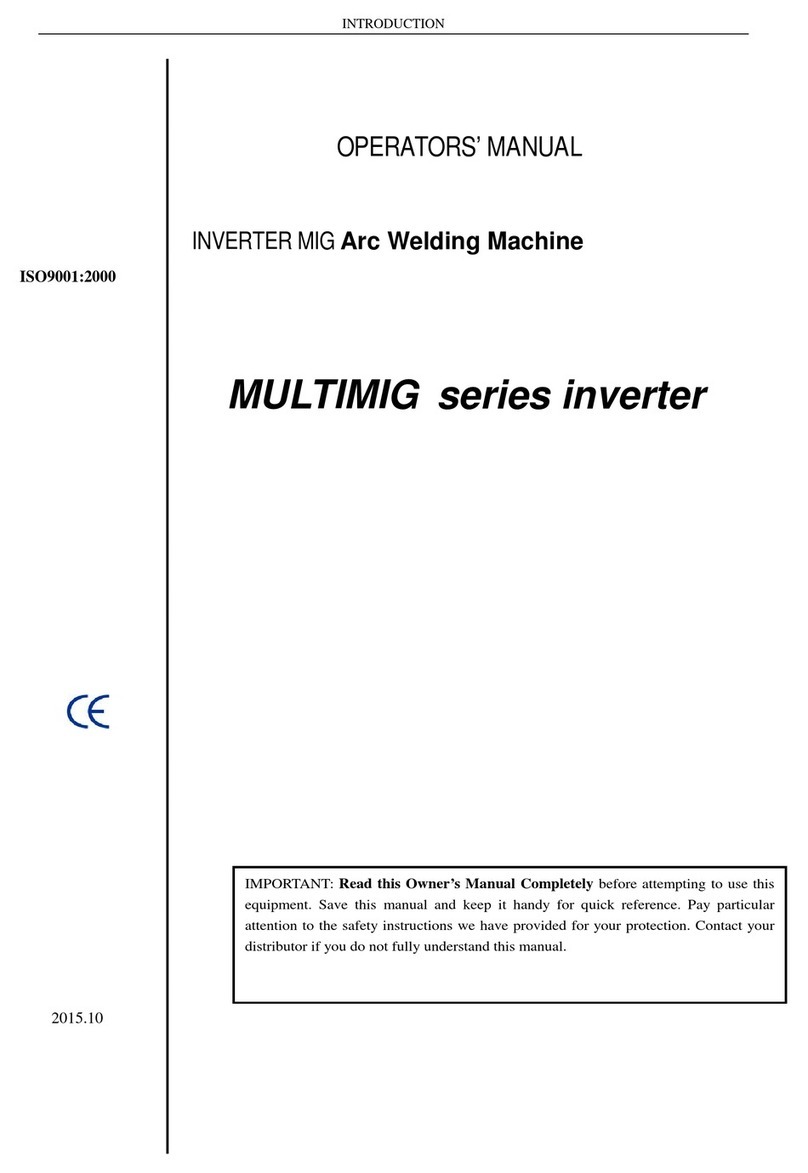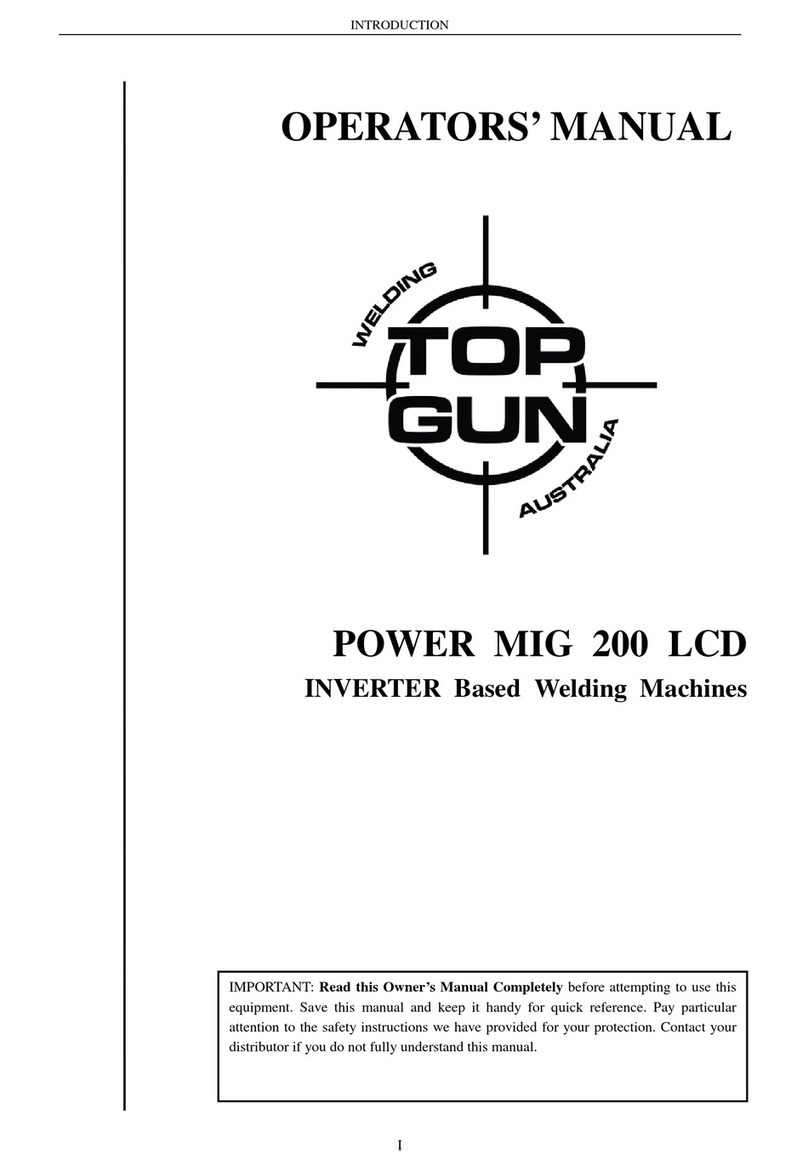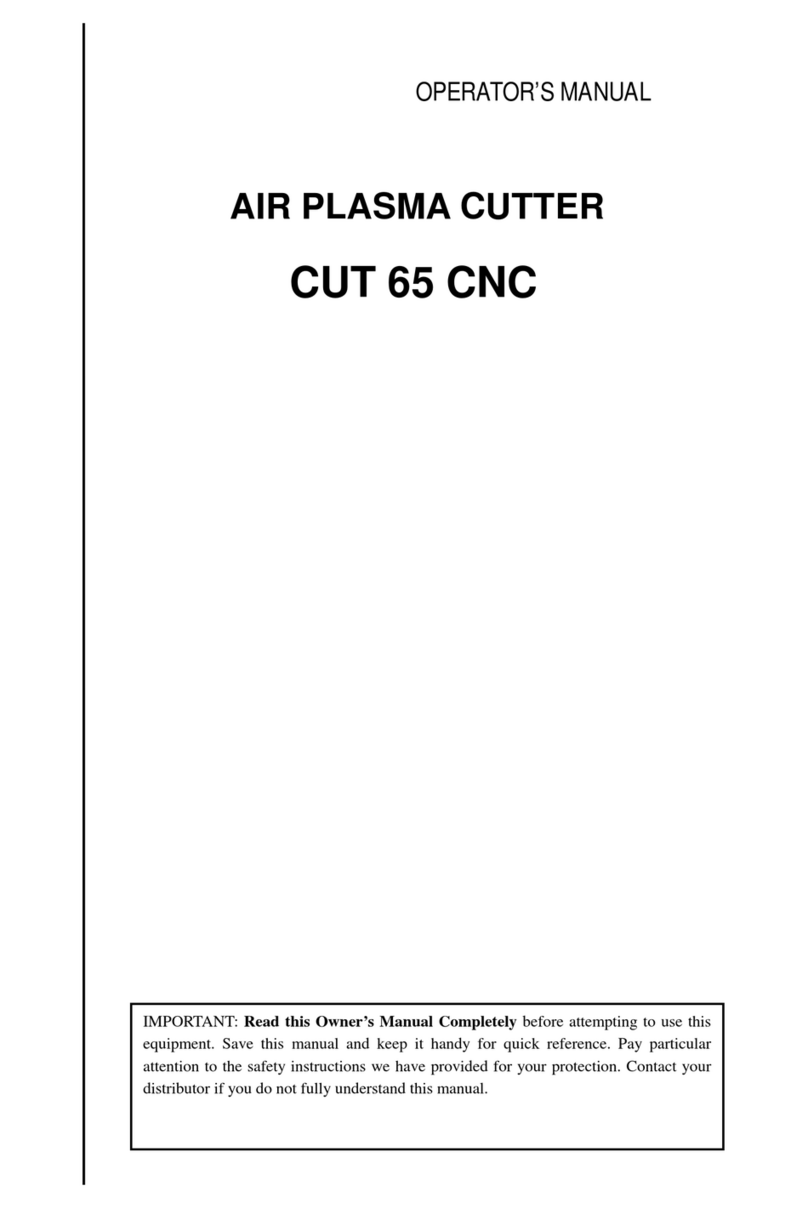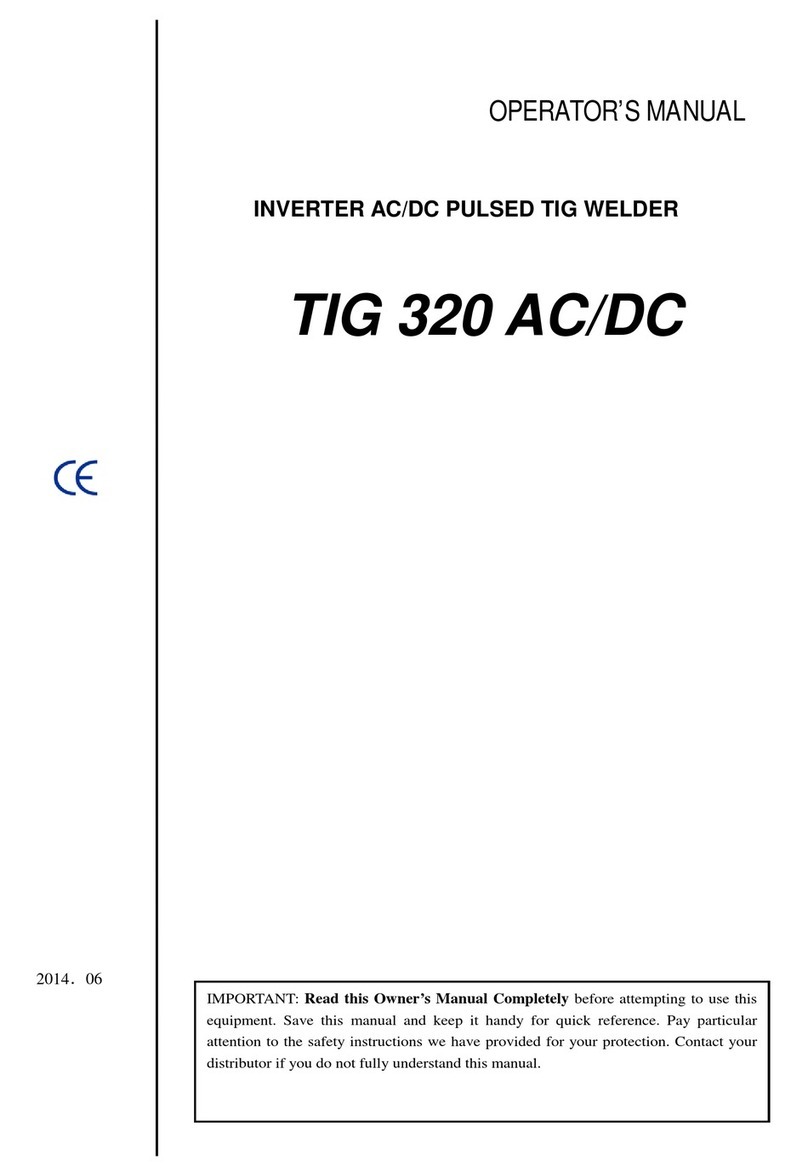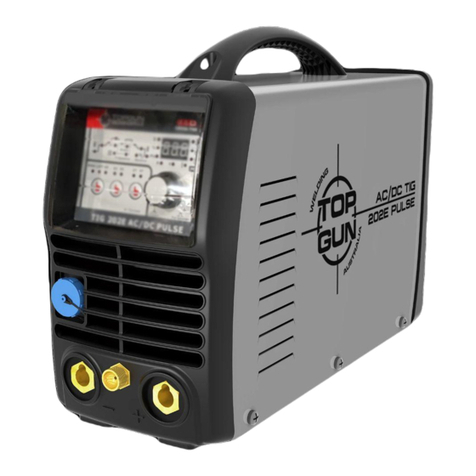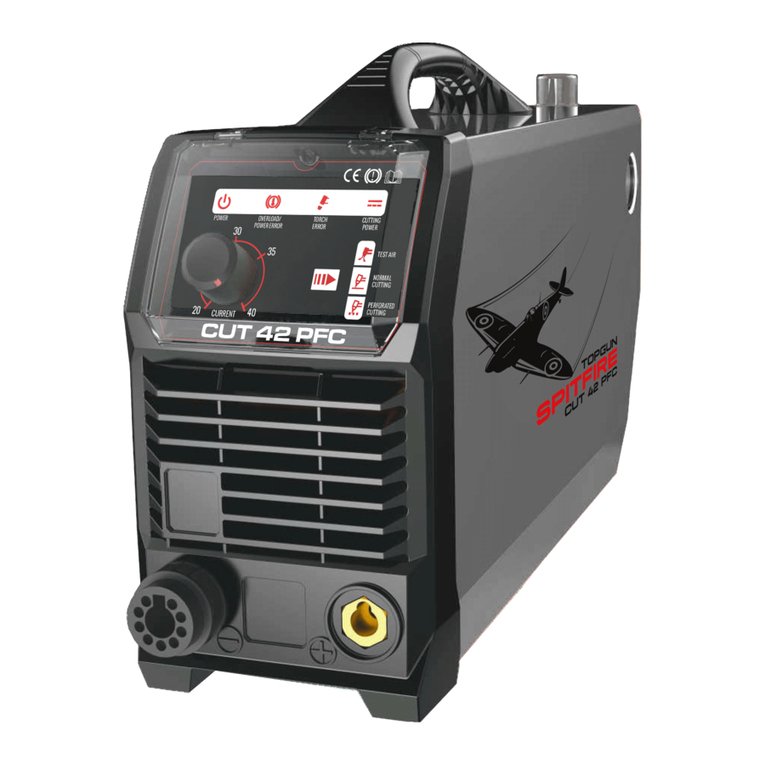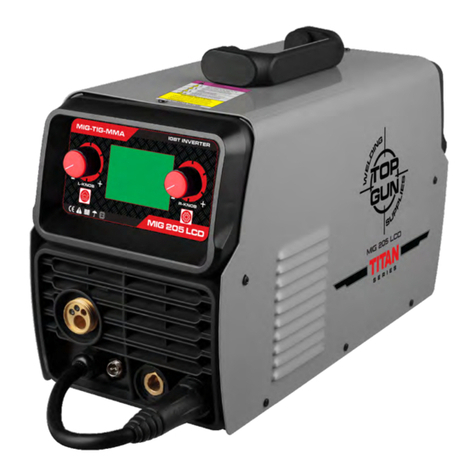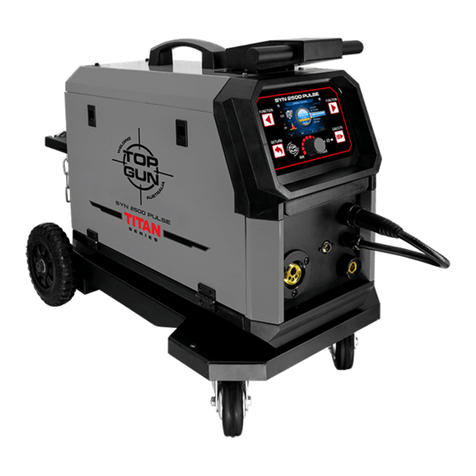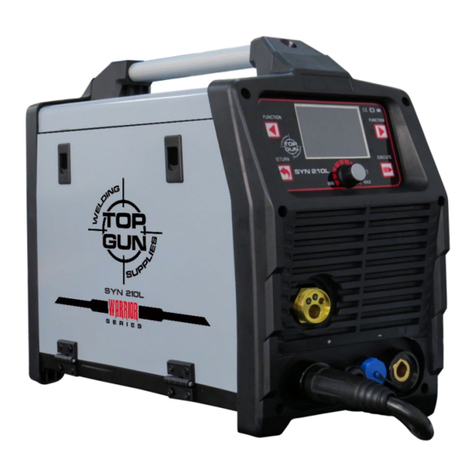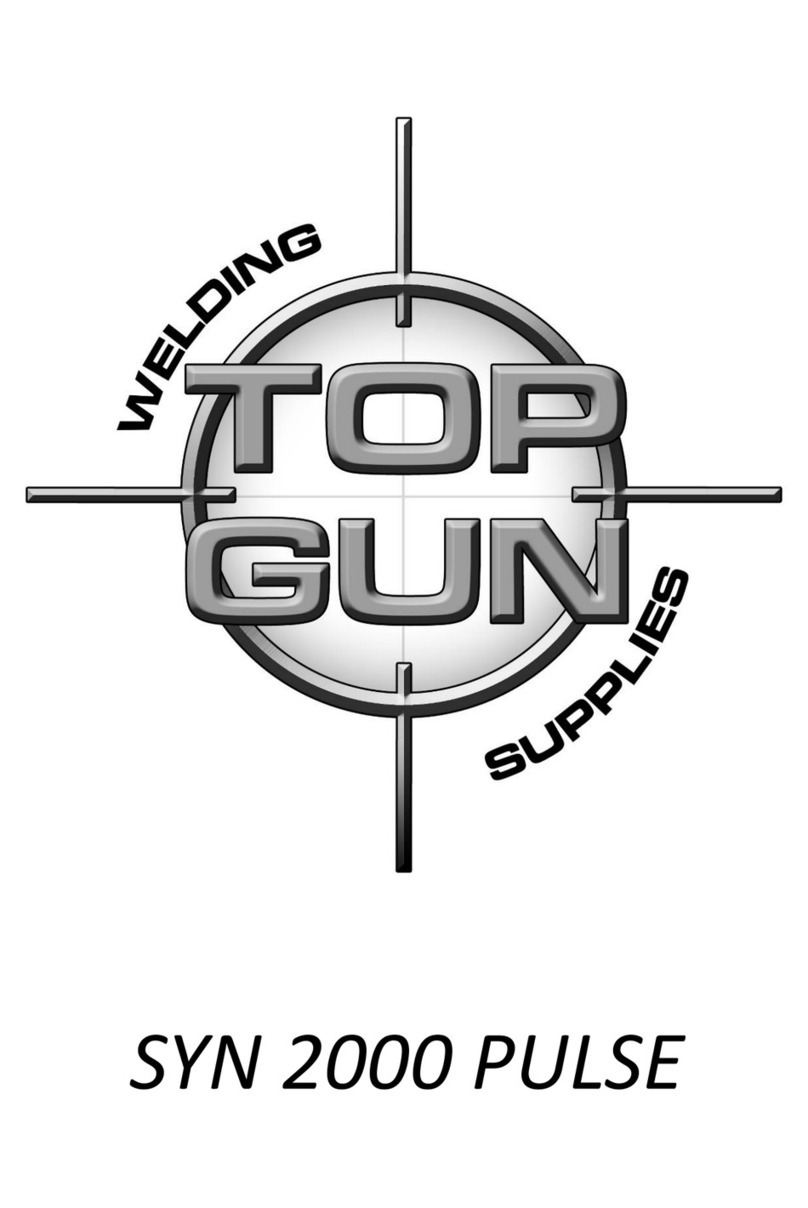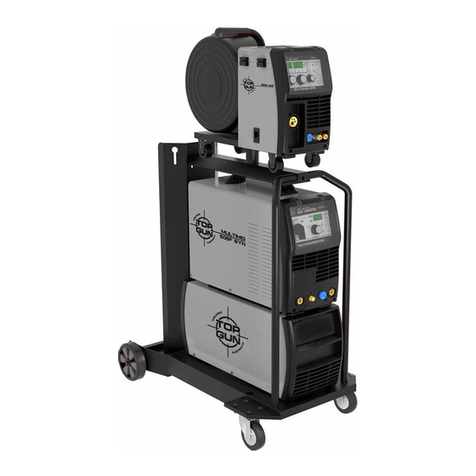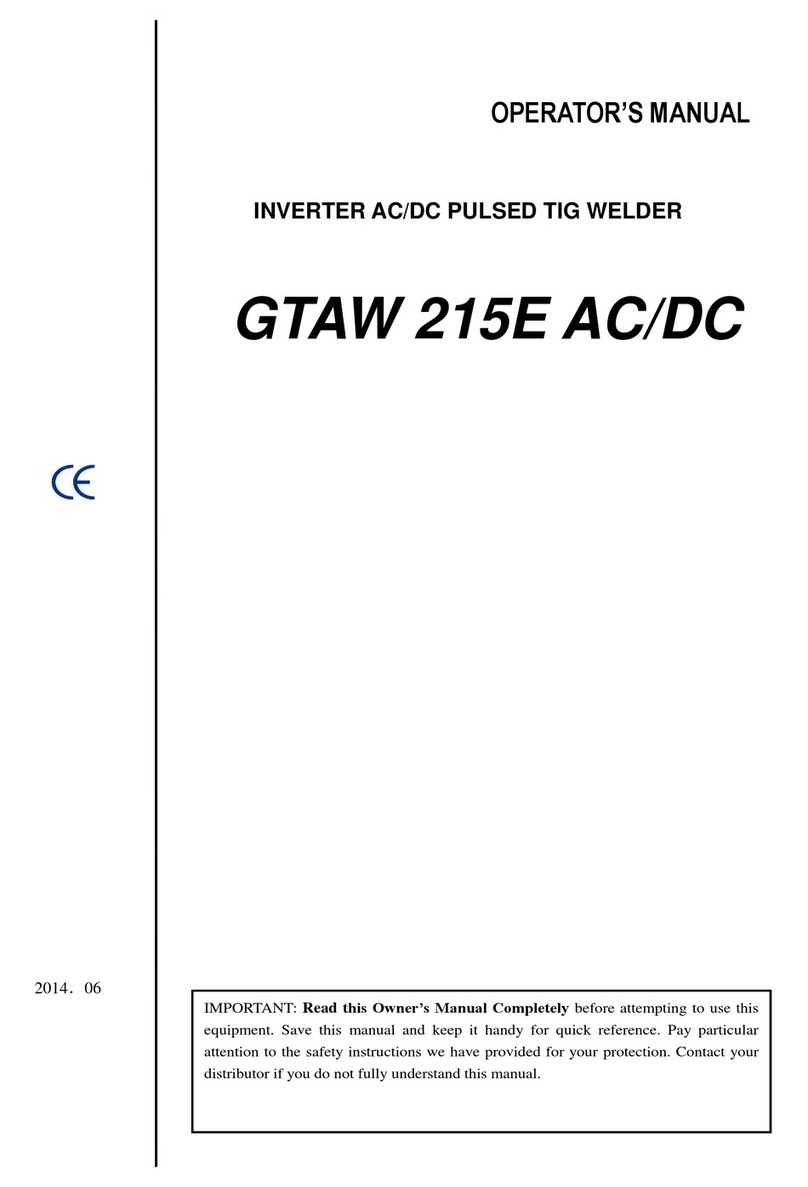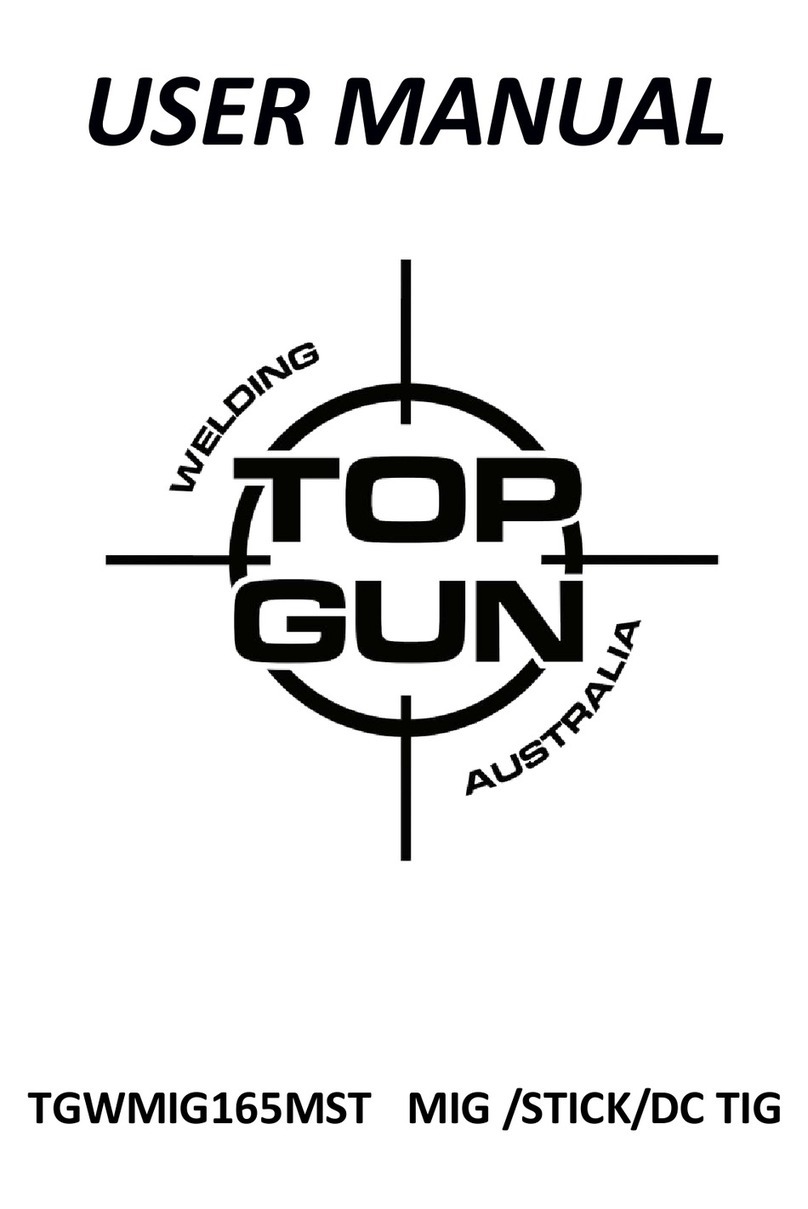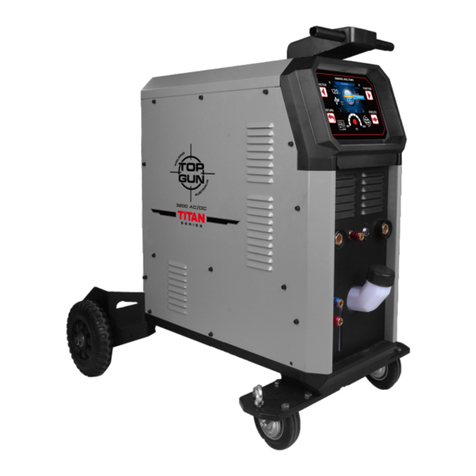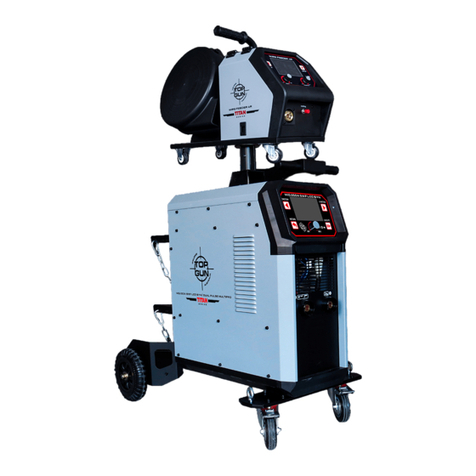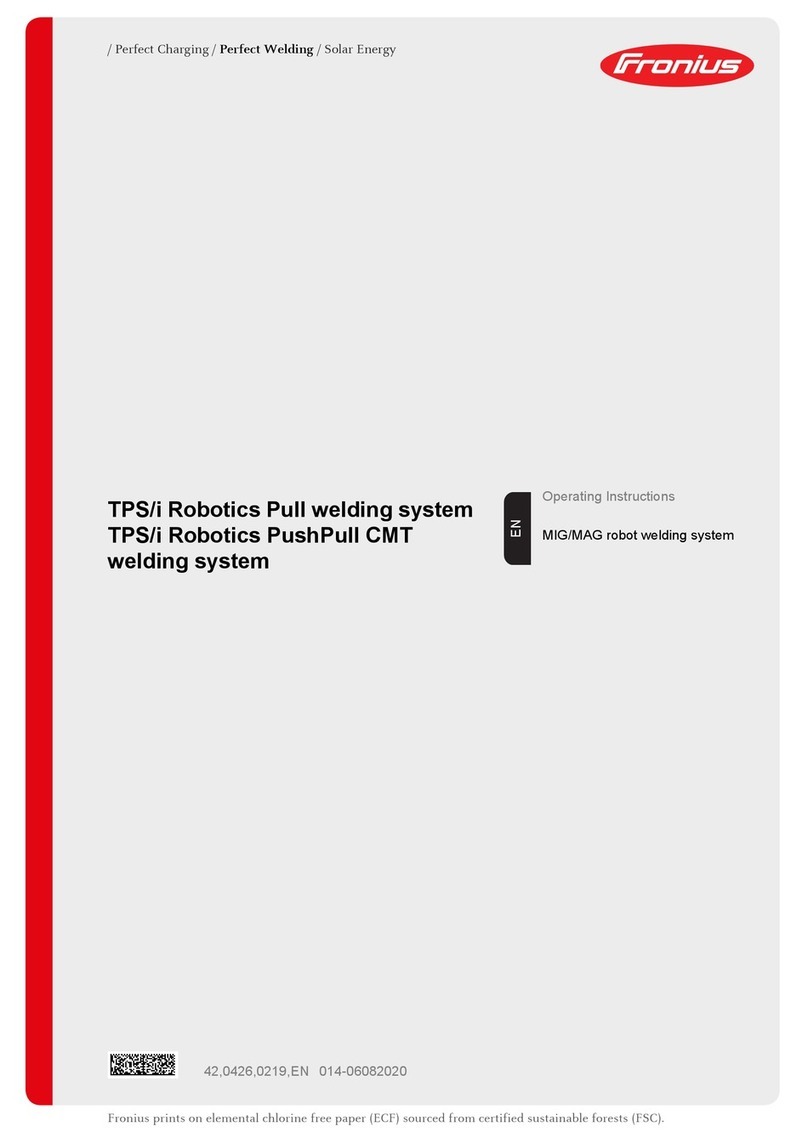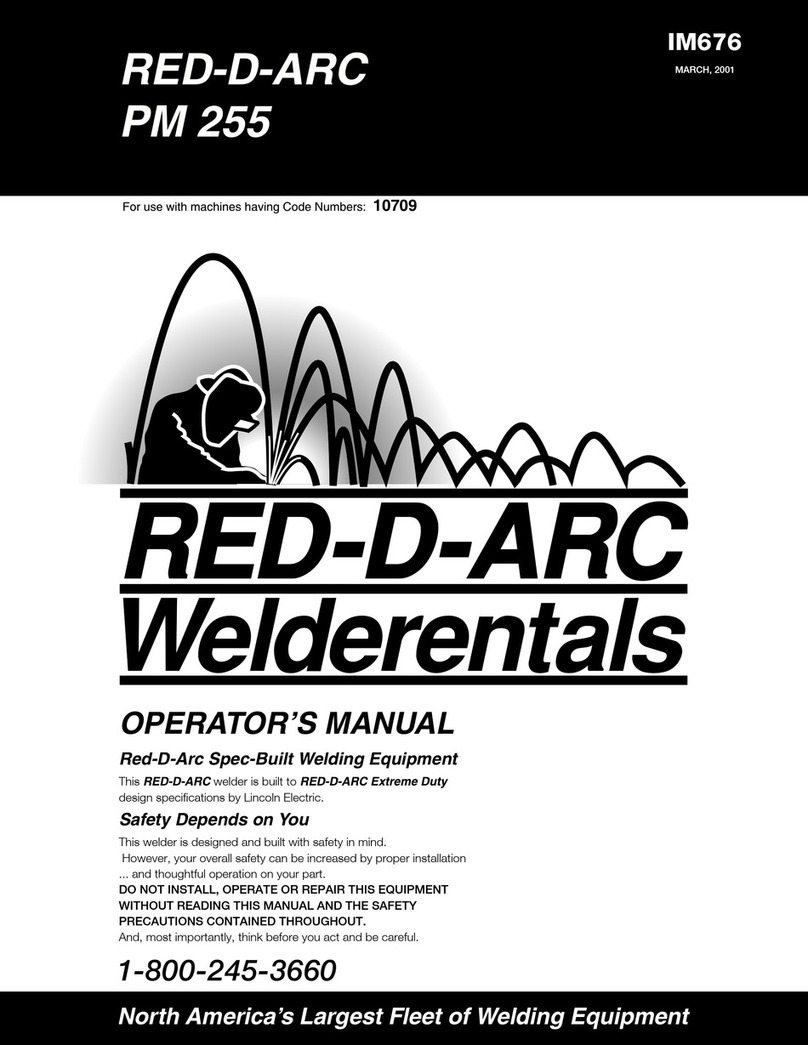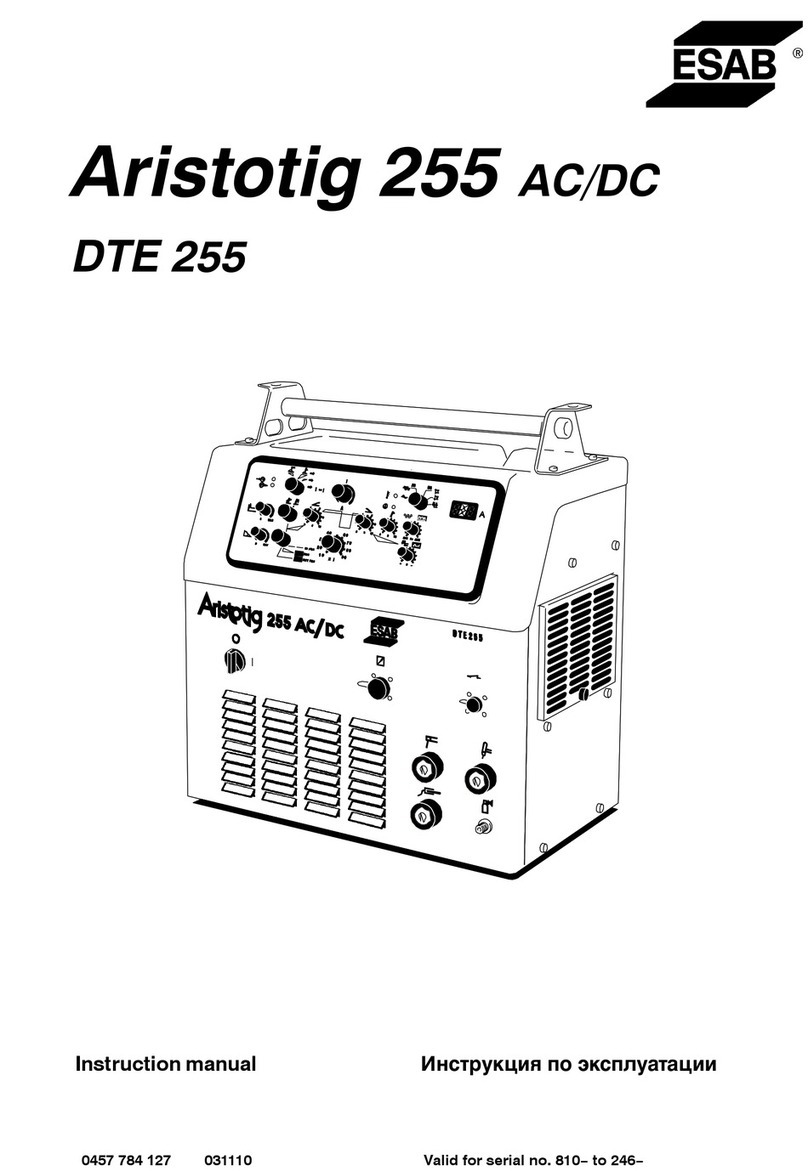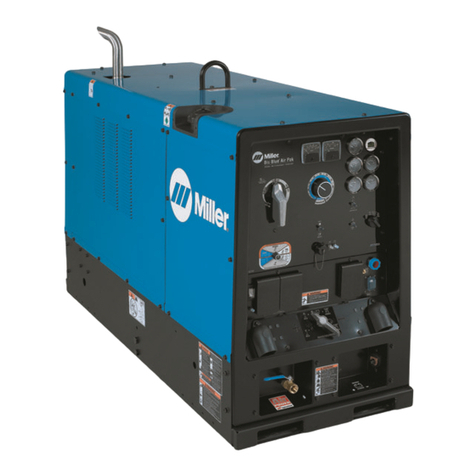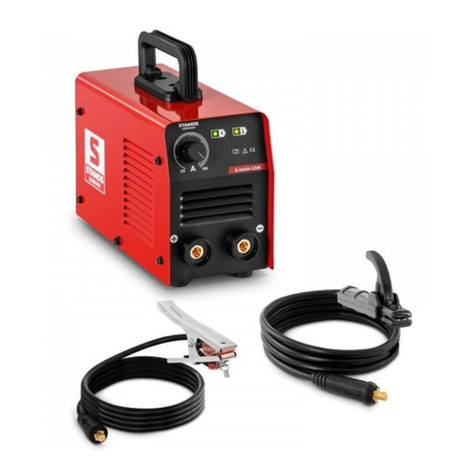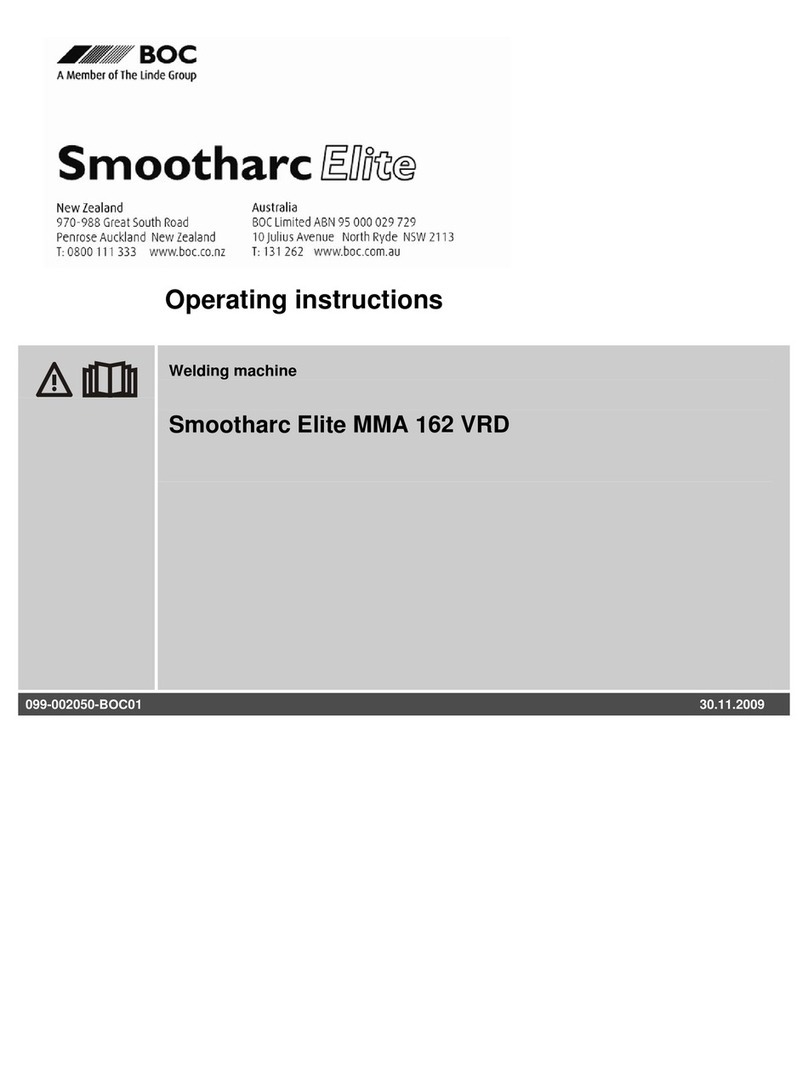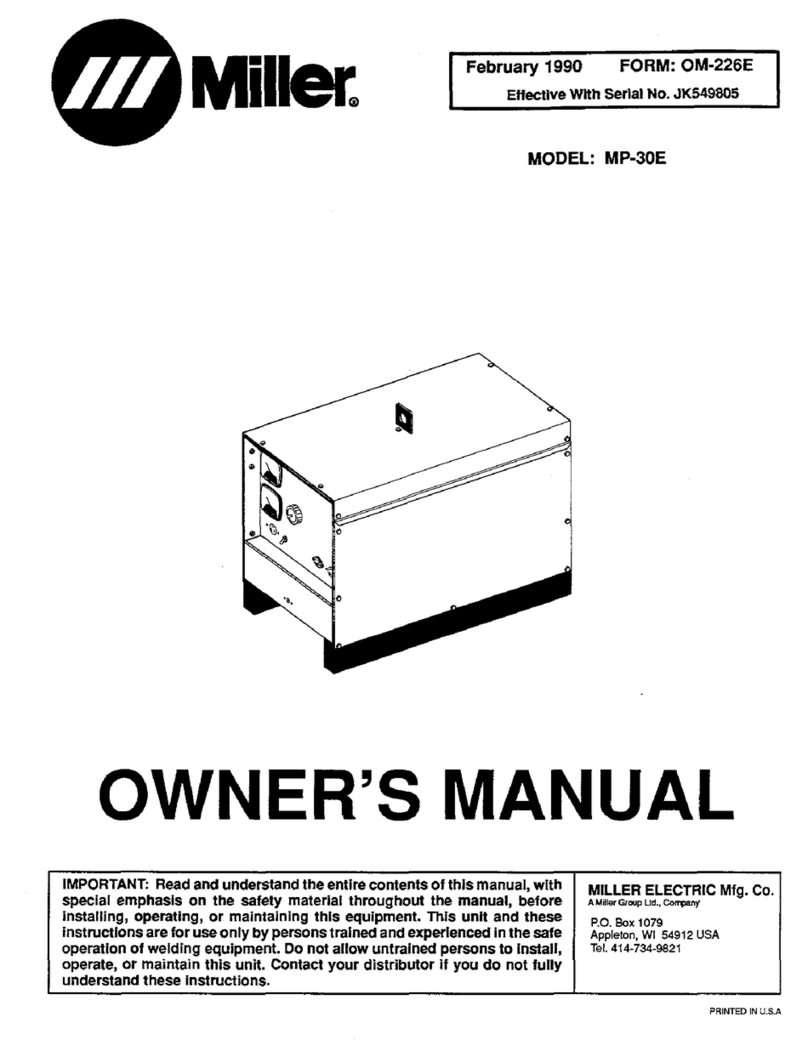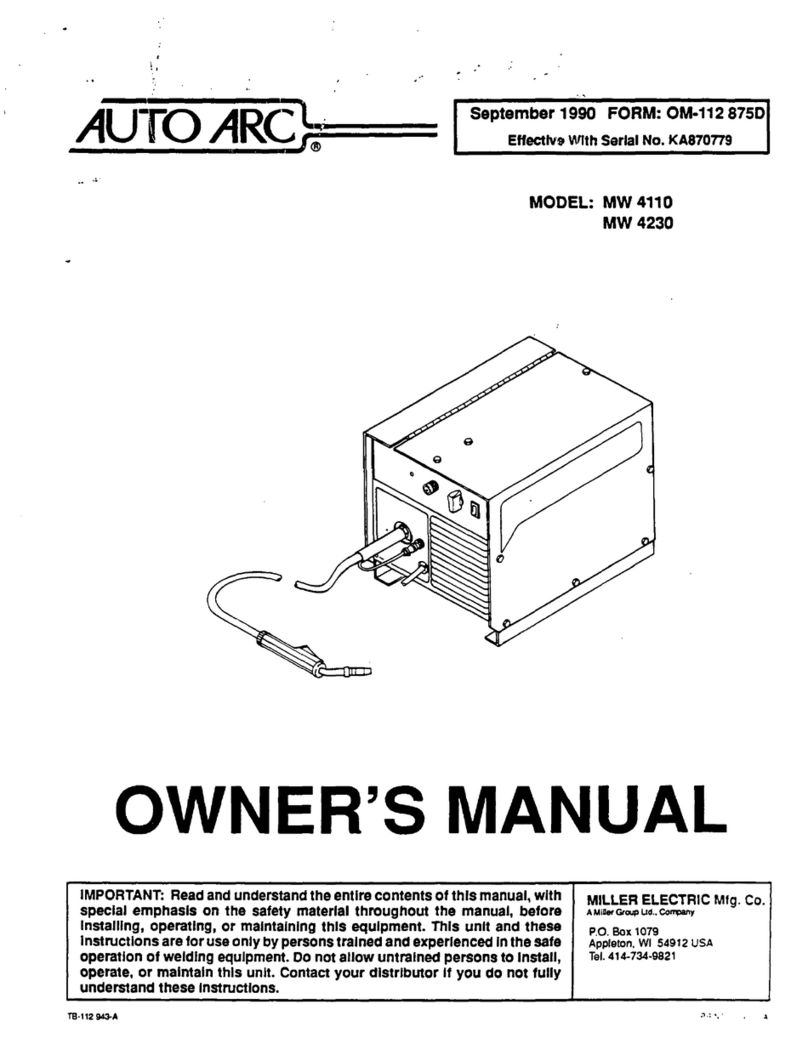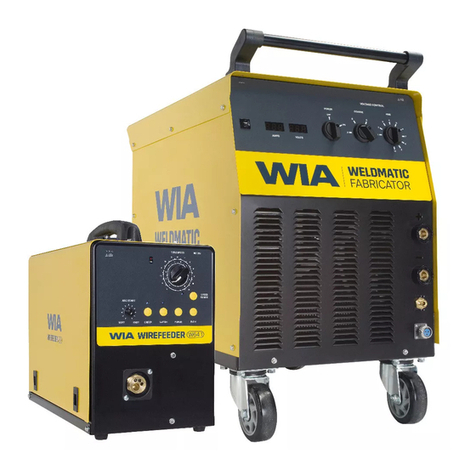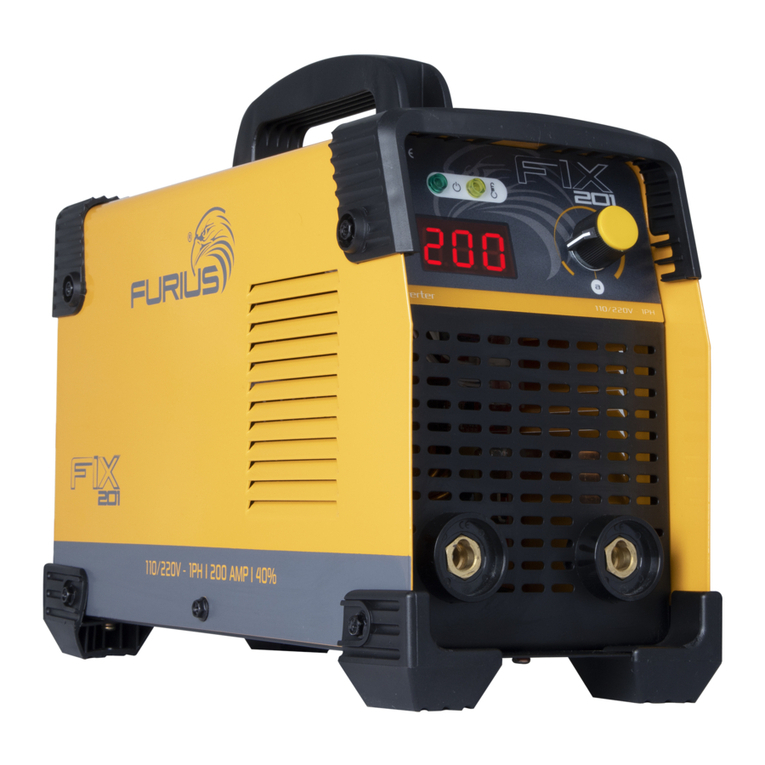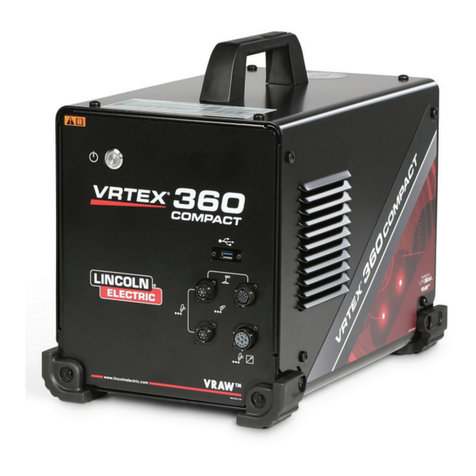
3
ARC RAYS FIRE & EXPLOSIONS
SPARKS AND HOT METAL
FUMES AND GASES
ARC RAYS can burn eyes and skin; NOISE can damage hearing.
ARC RAYS from the welding process produce an intense heat
and strong ultraviolet rays that can burn eyes and skin. Noise
from some processes can damage hearing.
The WELDING operation can potentially cause re or an
explosion as Sparks and spatter are emitted from the welding
arc. The ying sparks and hot metal, weld spatter, hot
workpiece and hot equipment have potential to cause res
and burns. Accidental contact of the wire or electrode to
grounded metal objects may cause sparks, overheating or re.
Chipping and grinding can cause ying metal. As welds cool,
they can throw o slag.
FUMES and GASES can be hazardous to your health and
Welding produces fumes and gases. Breathing these fumes
and gases can be hazardous to your health.
1. Use a Welding Helmet or Welding Face Shield tted with
proper shade or lter for the application, to protect your
face and eyes when welding or watching someone else weld.
2. Wear approved safety glasses. Side shields recommended.
3. Use protective screens and/or barriers, to protect others from
ash and glare and warn others not to watch the arc.
4. Wear protective clothing made from durable, ame resistant
material (eg: wool and leather) and appropriate foot protection.
5. Use approved ear plugs or ear mus if the noise level is high.
6. Never wear contact lenses while welding.
1. Protect yourself and others from ying sparks and hot metal.
2. Do not weld where ying sparks can strike ammable material.
3. Remove all ammables within 35ft (10.7m) of the welding arc.
If this is not possible, tightly cover them with an approved
containment method.
4. Be alert that welding sparks and hot materials from welding can
easily go through small cracks and openings to adjacent areas.
5. Watch for re, and keep a re extinguisher nearby.
6. Be aware that welding on a ceiling, oor, bulk-head or partition
can cause a re on the hidden side.
7. Do not weld on closed containers such as tanks or drums.
8. Connect the work cable to the workpiece as close to the welding
area as practical, to prevent welding current from traveling long,
possibly unknown paths and causing electric shock and re
hazards.
9. Do not use a welder to thaw frozen pipes.
1. Wear an approved face shield, safety goggles. Side shields
recommended.
2. Wear proper body protection to protect skin.
1. Keep your head out of the path of fumes as best you can. Do not
breathe the fumes if it can be avoided.
2. If inside, ventilate the area and/or use exhaust at or as close to
the arc as possible to remove the welding fumes/gases.
3. If ventilation is poor, use an approved air supplied or ltered
respirator.
4. Read the Material Safety Data Sheets (MSDS’s) and the
manufacturer’s instruction for metals, consumables, coatings
and cleaners.
5. Work in conned space only if it is well ventilated, or while
wearing an air supplied or ltered respirator. Shielding gases
used for welding can displace air causing injury or death. Be
sure the breathing air is safe.
6. Do not weld in locations near ammable liquids (eg. degreaser,
paint, aerosol storage or cleaning chemicals), as the heat and
rays of the arc could react with vapours to form highly toxic and
irritating or ammable gases.
7. Do not weld on coated metals, such as galvanized, lead or
cadmium plated steel, unless the coating is removed from the
weld area, the area is well ventilated and if necessary, while
wearing an air supplied or ltered respirator. The coatings and
any metals containing these elements can give o toxic fumes if
welded.
8. Protect yourself and others from ying sparks and hot metal.
9. Do not weld where ying sparks can strike ammable material.
10. Remove all ammables within a 35ft (10.7m) of the welding
arc. If this is not possible, tightly cover them with an approved
containment method.
















